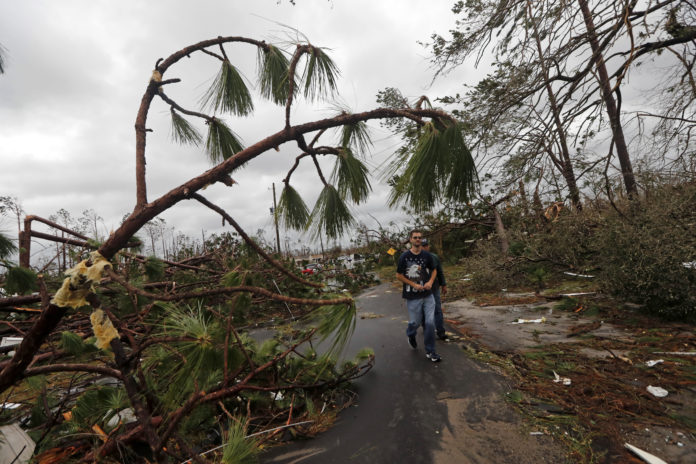
By Bridget Sjoberg | Staff Writer
Hurricane Michael is unprecedented for the Florida panhandle region, which is where the category 4 storm struck around 12:30 p.m. Wednesday afternoon.
The storm has caused one fatality thus far, and has led to approximately 525,000 power outages in the southeastern region of the US, according to AccuWeather. The regions most likely to be affected are the Florida panhandle and areas of southern Georgia. Flooding has the potential to affect the nearby Carolinas and Alabama as well.
“Life-threatening storm surge and 100-plus-mph winds are expected not just near the coast, but also inland, which could leave some areas without power for over a week,” the Weather Channel predicts. “A tropical storm warning has been issued from north of Fernandina Beach, Fla., to Duck, N.C., The tropical storm warning also extends inland to portions of southwestern Georgia. This means tropical-storm-force winds are expected somewhere within the warning area within 36 hours.”
Naples, Fla., junior Lauren Mulford said the storm is not hitting her home directly, but knows of friends affected and hopes students keep Florida residents in their prayers.
“A lot of my friends that attend universities in the area have had classes cancelled all week and have been encouraged to leave and seek safety,” Mulford said. “There will likely be extensive damage to homes and businesses along with a lack of food, electricity and resources for a while. The best thing Baylor students can do is lift those affected up in prayer.”
Minneola, Fla., sophomore Breann Bates is close to people who may be severely impacted by the storm and encourages the Baylor community to stand together and support one another during this difficult time for residents of affected areas.
“My family is safe at home in central Florida but our hunting camp was severely hit by the eye of the storm and depending on its strength, it may affect my brother and his fiancé in South Carolina,” Bates said. “The feeling of helplessness that comes with natural disasters is hard to navigate, especially when such events impact family or friends. The Baylor community is so powerful when it comes together for a cause — in recovery from the storm, students will probably have opportunities to donate clothes, food or other gifts to those impacted, and I hope that we feel compelled to do so with a caring heart.”
Dr. Don Greene, professor of meteorology and oceanography in Baylor’s department of geosciences, said that the movement of water in the Gulf of Mexico can be dangerous and lead to powerful storms like Hurricane Michael.
“In the Gulf, water is flowing counterclockwise; it comes in through the Yucatan Strait and wants to flow out South of Miami but can’t flow out as fast as it flows in.” Greene said in an interview Monday. “The water backs up and forms a big loop that pushes water up towards the top of Florida, which is most likely a big contributing factor to this hurricane’s intensity.”
According to CNN and Public Good, one of the best ways to support victims of the hurricane is by donating to the American Red Cross, Convoy of Hope or World Vision, nonprofits providing relief services to affected people and areas.





